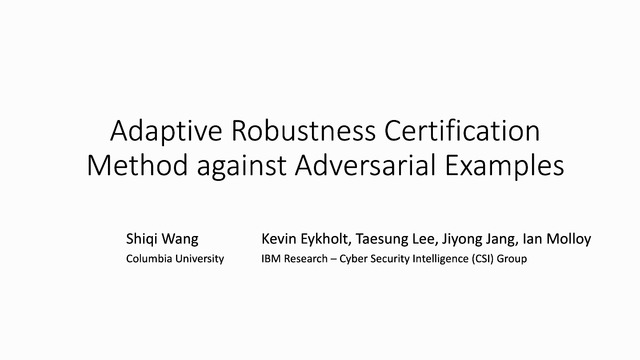Abstract:
Certified robustness is a desirable property for deep neural networks in safety-critical applications, and popular training algorithms can certify robustness of a neural network by computing a global bound on its Lipschitz constant. However, such a bound is often loose: it tends to over-regularize the neural network and degrade its natural accuracy. A tighter Lipschitz bound may provide a better tradeoff between natural and certified accuracy, but is generally hard to compute exactly due to non-convexity of the network. In this work, we propose an efficient and trainable \emph{local} Lipschitz upper bound by considering the interactions between activation functions (e.g. ReLU) and weight matrices. Specifically, when computing the induced norm of a weight matrix, we eliminate the corresponding rows and columns where the activation function is guaranteed to be a constant in the neighborhood of each given data point, which provides a provably tighter bound than the global Lipschitz constant of the neural network. Our method can be used as a plug-in module to tighten the Lipschitz bound in many certifiable training algorithms. Furthermore, we propose to clip activation functions (e.g., ReLU and MaxMin) with a learnable upper threshold and a sparsity loss to assist the network to achieve an even tighter local Lipschitz bound. Experimentally, we show that our method consistently outperforms state-of-the-art methods in both clean and certified accuracy on MNIST, CIFAR-10 and TinyImageNet datasets with various network architectures.









































